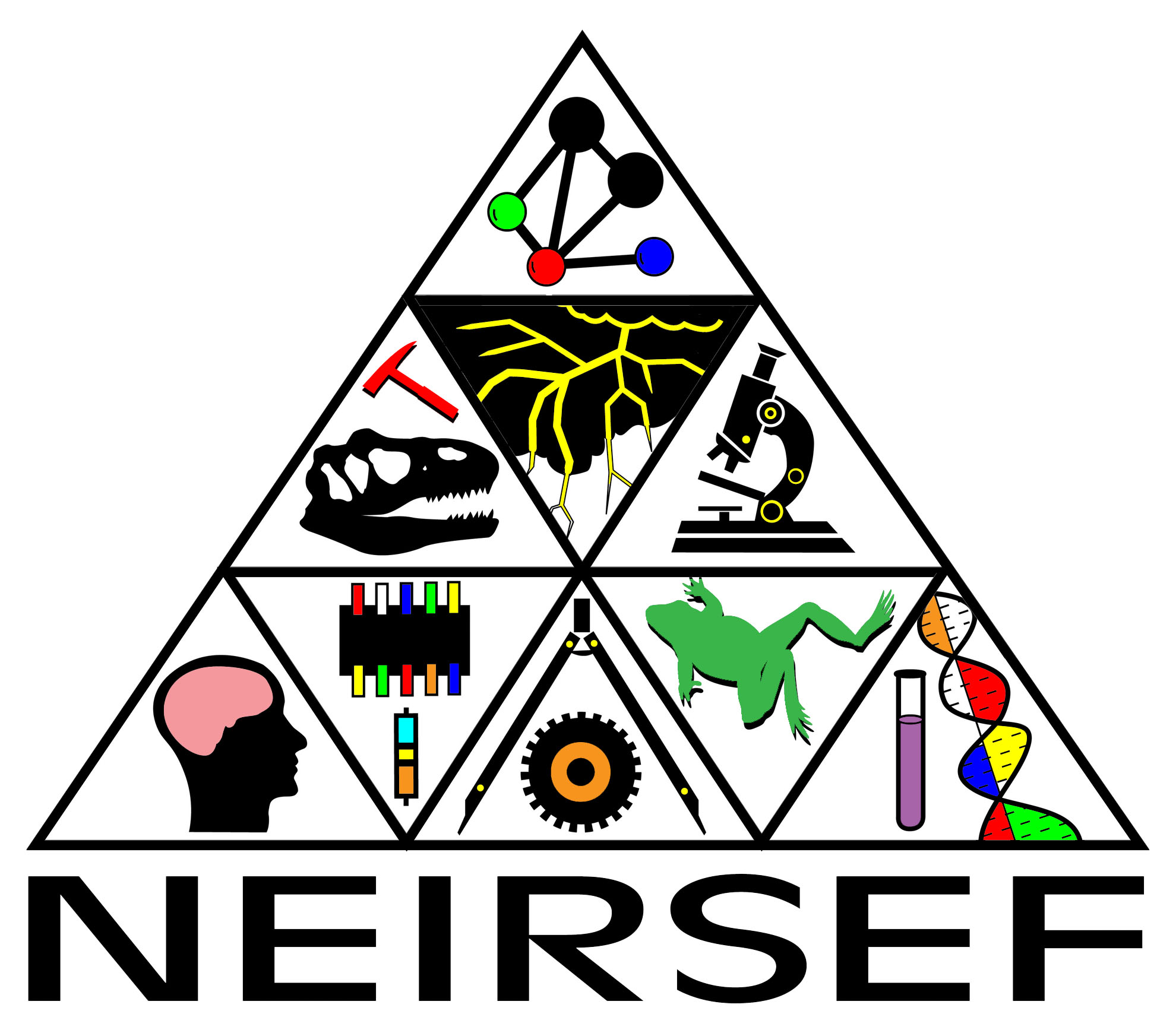ISEF Project Category Descriptions
Projects for all students in grades 6-12 much choose to enter their project in one of the 13 ISEF categories offered at NEIRSEF.
Teams are allowed to have up to THREE (3) members.
- ANIMAL SCIENCES (AS): Study of animals and animal life, including the study of the structure, physiology, development, and classification of animals. Animal ecology, physiology, animal husbandry, cytology, histology, entomology, ichthyology, ornithology, herpetology, etc.
- BEHAVIORAL AND SOCIAL SCIENCES (BE): The science or study of the thought processes and behavior of humans and other animals in their interactions with the environment studied through observational and experimental methods.
- BIOCHEMISTRY (BI): The study of the chemical substances and vital processes occurring in living organisms, the processes by which these substances enter into, or are formed in, the organisms and react with each other and the environment.
- BIOMEDICAL AND HEALTH SCIENCES (BM): Studies specifically designed to address issues of human health and disease, including the diagnosis, treatment, prevention or epidemiology of disease and other damage to the human body or mental systems. May include investigation of internal as well as external factors such as feedback mechanisms, stress or environmental impact on human health and disease.
- CHEMISTRY (CH): The science of the composition, structure, properties, and reactions of matter, especially of atomic and molecular systems.
- COMPUTER SCIENCES (CS): The study of information processes, the structures and procedures that represent processes, and their implementation in information processing systems. It includes systems analysis and design, application and system software design, programming, and datacenter operations.
- EARTH & ENVIRONMENTAL SCIENCE (EA): Studies of the environment and its effect on organisms/systems, including investigations of biological processes such as growth and life span, as well as studies of Earth systems and their evolution. Includes geology, mineralogy, physiography, oceanography, meteorology, climatology, speleology, seismology, geography, atmospheric sciences, etc.)
- ENGINEERING (EN): The application of scientific and mathematical principles to practical ends such as the design, manufacture, and operation of efficient and economical structures, processes, machines, and systems.
- MATERIALS SCIENCE (MS): The study of the integration of various materials forms in systems, devices, and components that rely on their unique and specific properties. Includes nanoparticles, nanofibers, and nanolayered structures, coatings and laminates, and other structures, their measurements and properties.
- MATHEMATICS (MA): The study of the measurement, properties, and relationships of quantities and sets, using numbers and symbols. The deductive study of numbers, geometry, and various abstract constructs, or structures. Mathematics is very broadly divided into foundations, algebra, analysis, geometry, and applied mathematics, which includes theoretical computer science.
- MICROBIOLOGY (MI): The study of micro-organisms, including bacteria, viruses, prokaryotes, and simple eukaryotes and of antibiotic substances. NOTE that bacterial studies are not permissible for students in grades K-5.
- PHYSICS & ASTRONOMY (PH): Physics is the science of matter and energy and of interactions between the two. Astronomy is the study of anything in the universe beyond the Earth.
- PLANT SCIENCE (PS): Studies of plants and how they live. Agriculture and agronomy, ecology, horticulture, forestry, plant taxonomy, physiology, pathology, plant genetics, hydroponics, algae, etc.



